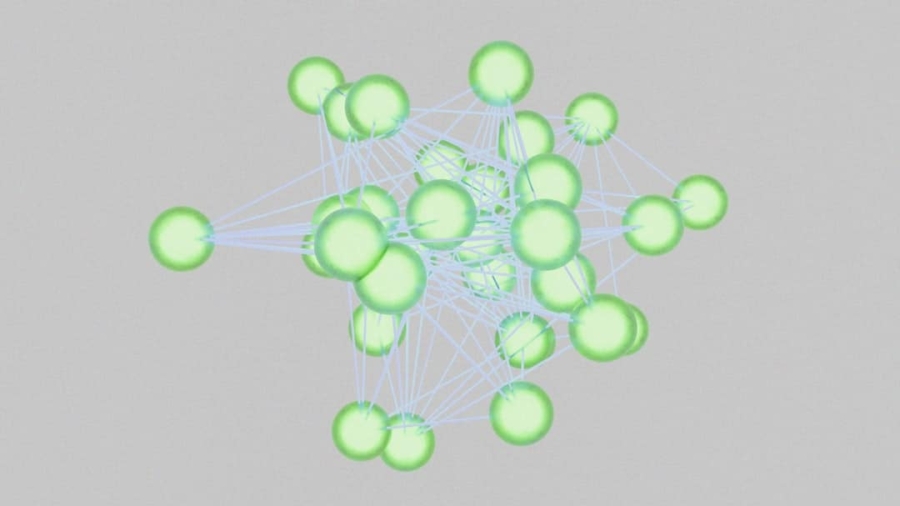The concept of Zero Trust Architecture (ZTA) has its roots in the early 2010s, emerging as a response to the evolving landscape of cybersecurity threats. Traditional security models operated on the assumption that threats primarily originated from outside the network perimeter. This perimeter-based security approach, which relied heavily on firewalls and VPNs, became increasingly inadequate as organizations adopted cloud services, mobile devices, and remote work practices.
The proliferation of sophisticated cyberattacks, including data breaches and ransomware incidents, highlighted the need for a more robust security framework that could address vulnerabilities both inside and outside the network. In 2010, John Kindervag, a former Forrester Research analyst, introduced the Zero Trust model, advocating for a paradigm shift in how organizations approach security. The core tenet of Zero Trust is the principle of “never trust, always verify,” which posits that no user or device should be trusted by default, regardless of whether they are inside or outside the network perimeter.
This shift was further propelled by the rise of advanced persistent threats (APTs) and insider threats, which demonstrated that attackers could exploit legitimate access to compromise sensitive data. As organizations began to recognize the limitations of traditional security measures, Zero Trust Architecture gained traction as a comprehensive framework designed to mitigate risks associated with modern digital environments.
Key Takeaways
- Zero Trust Architecture has evolved from the traditional perimeter-based security model to a more dynamic and adaptive approach to security.
- The key principles of Zero Trust Architecture include the principle of least privilege, micro-segmentation, continuous authentication, and encryption of data in transit and at rest.
- Implementing Zero Trust Architecture in enterprises involves assessing the current security posture, identifying critical assets, implementing access controls, and monitoring and analyzing network traffic.
- The benefits of Zero Trust Architecture for enterprises include improved security posture, reduced risk of data breaches, and better visibility and control over network traffic.
- Overcoming challenges in adopting Zero Trust Architecture requires strong leadership support, employee education and training, and integration with existing security tools and processes.
The Key Principles of Zero Trust Architecture
Least Privilege Access
One of the foundational principles is the concept of least privilege access. This principle dictates that users and devices should only be granted the minimum level of access necessary to perform their tasks. By limiting access rights, organizations can significantly reduce the attack surface and minimize the potential impact of a security breach.
Continuous Monitoring and Validation
Another critical principle is continuous monitoring and validation of user identities and device health. In a Zero Trust model, authentication is not a one-time event but an ongoing process. Organizations must implement multi-factor authentication (MFA) and real-time monitoring to ensure that users are who they claim to be and that their devices meet security compliance standards.
Detecting Anomalies and Responding to Threats
This continuous validation helps detect anomalies in user behavior or device status, allowing organizations to respond swiftly to potential threats. For example, if an employee’s account suddenly attempts to access sensitive data from an unusual location or device, automated alerts can trigger investigations or access restrictions.
Implementing Zero Trust Architecture in Enterprises

Implementing Zero Trust Architecture in enterprises requires a strategic approach that encompasses technology, processes, and organizational culture. The first step in this journey is conducting a thorough assessment of existing security measures and identifying vulnerabilities within the current infrastructure. Organizations must map out their assets, data flows, and user access patterns to understand where potential risks lie.
This assessment serves as a foundation for designing a tailored Zero Trust strategy that aligns with the organization’s specific needs and objectives. Once the assessment is complete, enterprises can begin to implement the necessary technologies that support Zero Trust principles. This may involve deploying identity and access management (IAM) solutions, network segmentation tools, and endpoint detection and response (EDR) systems.
For instance, organizations can leverage micro-segmentation to isolate critical applications and data from the rest of the network, ensuring that even if one segment is compromised, attackers cannot easily move laterally across the network. Additionally, integrating security information and event management (SIEM) systems can enhance visibility into user activities and facilitate real-time threat detection.
The Benefits of Zero Trust Architecture for Enterprises
The adoption of Zero Trust Architecture offers numerous benefits for enterprises seeking to bolster their cybersecurity posture. One of the most significant advantages is enhanced protection against data breaches. By implementing strict access controls and continuous monitoring, organizations can significantly reduce the likelihood of unauthorized access to sensitive information.
This proactive approach not only safeguards critical assets but also helps maintain compliance with regulatory requirements such as GDPR or HIPAA, which mandate stringent data protection measures. Moreover, Zero Trust Architecture fosters a culture of security awareness within organizations. As employees become accustomed to the principles of least privilege access and continuous validation, they are more likely to adopt secure practices in their daily activities.
Additionally, as organizations embrace remote work and cloud services, Zero Trust provides a framework that ensures secure access regardless of location or device, enabling greater flexibility while maintaining robust security controls.
Overcoming Challenges in Adopting Zero Trust Architecture
Despite its numerous advantages, adopting Zero Trust Architecture is not without challenges. One significant hurdle organizations face is the complexity of integrating new technologies with existing systems. Many enterprises have legacy systems that may not be compatible with modern Zero Trust solutions, leading to potential disruptions during implementation.
To address this challenge, organizations must prioritize careful planning and phased rollouts that allow for gradual integration while minimizing operational impact. Another challenge lies in changing organizational mindsets regarding security practices. Employees accustomed to traditional perimeter-based security may resist adopting new protocols that require them to verify their identities continuously or limit their access rights.
To overcome this resistance, organizations should invest in comprehensive training programs that educate employees about the importance of Zero Trust principles and how they contribute to overall security. By fostering an environment where employees understand their role in maintaining security, organizations can facilitate smoother transitions to a Zero Trust model.
Case Studies of Successful Zero Trust Architecture Implementations

Google’s BeyondCorp Initiative
One notable example is Google’s BeyondCorp initiative, which redefined how employees access corporate resources.
Improved User Experience and Security Posture
This transformation not only improved user experience but also strengthened Google’s overall security posture by ensuring that all access requests were continuously validated.
Microsoft’s Zero Trust Integration in Azure Cloud Services
Another compelling case study is that of Microsoft, which has integrated Zero Trust principles into its Azure cloud services. By leveraging identity protection tools and conditional access policies, Microsoft has created a secure environment for its users while allowing seamless collaboration across teams. The company’s commitment to Zero Trust has not only enhanced its own security but has also set a benchmark for other enterprises looking to adopt similar frameworks in their cloud environments.
The Future of Zero Trust Architecture in Enterprise Security
As cyber threats continue to evolve in sophistication and frequency, the future of Zero Trust Architecture appears promising yet challenging. Organizations are increasingly recognizing that traditional security models are insufficient for addressing modern risks; thus, Zero Trust is likely to become a standard practice across various industries. The integration of artificial intelligence (AI) and machine learning (ML) into Zero Trust frameworks will further enhance threat detection capabilities by enabling real-time analysis of user behavior patterns and identifying anomalies more effectively.
Moreover, as remote work becomes more entrenched in corporate culture, Zero Trust will play a crucial role in securing distributed workforces. Organizations will need to adapt their security strategies to accommodate hybrid work environments while ensuring that employees can access necessary resources securely from anywhere. This shift will necessitate ongoing investments in technology and training to maintain robust security measures without hindering productivity.
Best Practices for Maintaining Zero Trust Architecture in Enterprises
To ensure the long-term success of Zero Trust Architecture within enterprises, organizations should adhere to several best practices. First and foremost is the importance of regular audits and assessments of security policies and controls. Continuous evaluation allows organizations to identify gaps in their Zero Trust implementation and make necessary adjustments based on emerging threats or changes in business operations.
Additionally, fostering collaboration between IT and security teams is essential for maintaining an effective Zero Trust environment. By working together, these teams can ensure that security measures align with business objectives while remaining agile enough to respond to evolving threats. Furthermore, organizations should prioritize user education and awareness programs that reinforce the principles of Zero Trust among employees at all levels.
By cultivating a culture of security mindfulness, enterprises can empower their workforce to actively participate in safeguarding sensitive information. In conclusion, as organizations navigate an increasingly complex cybersecurity landscape, embracing Zero Trust Architecture will be vital for protecting critical assets and ensuring business continuity. Through careful implementation and adherence to best practices, enterprises can build resilient security frameworks capable of adapting to future challenges while fostering a culture of vigilance among employees.
A related article to How Zero Trust Architecture Is Becoming a Standard for Enterprises discusses the best order flow trading software in-depth reviews and analysis. This article provides valuable insights into the latest advancements in trading technology and how it can benefit businesses in the financial sector. To learn more about the best order flow trading software, you can check out the article here.
FAQs
What is Zero Trust Architecture?
Zero Trust Architecture is a security concept based on the principle of “never trust, always verify.” It assumes that threats exist both inside and outside the network, and aims to secure every access request, regardless of whether it originates from inside or outside the network perimeter.
Why is Zero Trust Architecture becoming a standard for enterprises?
Zero Trust Architecture is becoming a standard for enterprises due to the increasing number of cyber threats and data breaches. Traditional security models that rely on perimeter-based defenses are no longer sufficient to protect against sophisticated attacks. Zero Trust Architecture provides a more comprehensive and proactive approach to security by continuously verifying the identity and security posture of every user and device accessing the network.
What are the key components of Zero Trust Architecture?
The key components of Zero Trust Architecture include identity and access management, network segmentation, continuous monitoring and analytics, encryption, and micro-segmentation. These components work together to ensure that only authorized users and devices have access to the resources they need, and that all access requests are continuously verified and monitored.
How does Zero Trust Architecture improve security for enterprises?
Zero Trust Architecture improves security for enterprises by reducing the attack surface, minimizing the risk of data breaches, and providing better visibility and control over network traffic. By implementing strict access controls and continuously verifying the identity and security posture of users and devices, Zero Trust Architecture helps prevent unauthorized access and lateral movement within the network.
What are the challenges of implementing Zero Trust Architecture?
Challenges of implementing Zero Trust Architecture include the complexity of integrating and managing multiple security technologies, the need for strong identity and access management capabilities, and the potential impact on user experience and productivity. Additionally, organizations may face resistance to change from employees accustomed to more permissive access policies.

